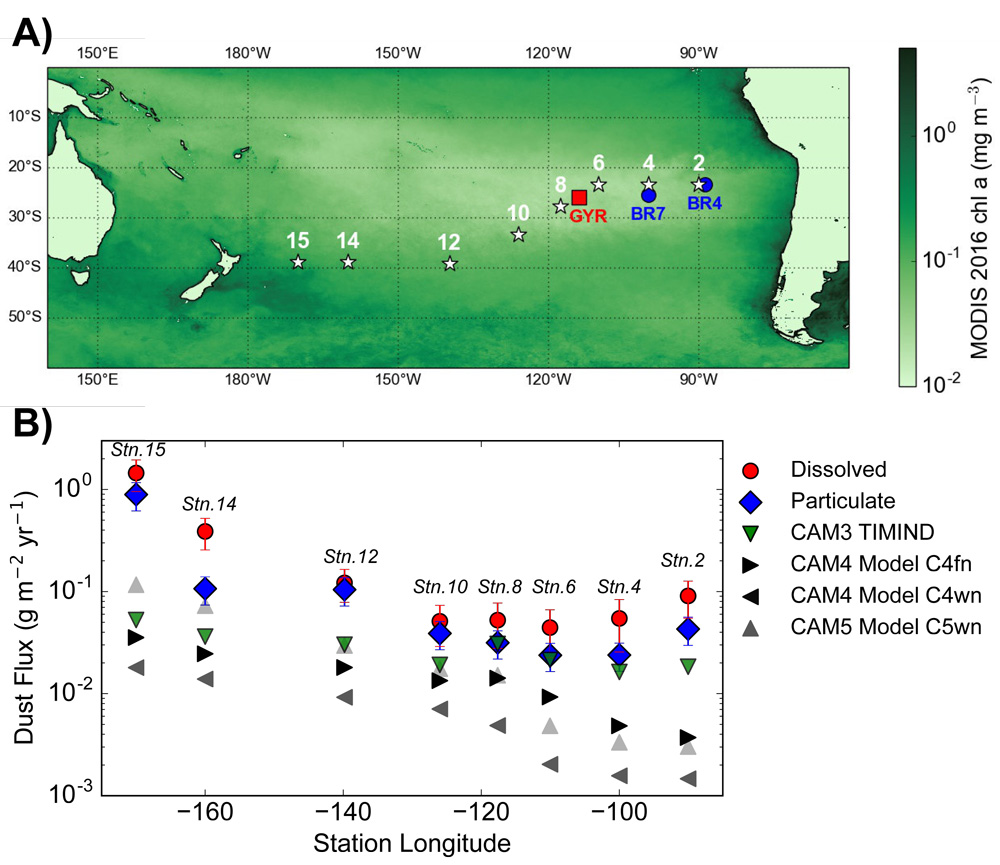Surface water trace element and isotope data challenge dust flux models
Using measurements of dissolved and particulate thorium-230 (230Th) and thorium-232 (232Th) along a section across the South Pacific (GEOTRACES process study GPpr09), Pavia and collaborators (2020, see reference below) estimated the dust flux over this remote area. Although the calculated dust input rates stand among the lowest ever determined, they are 1–2 orders of magnitude higher than those estimated by global dust models. Using published dissolved iron (Fe) data, Fe/232Th ratios and solubility of these tracers in aerosols, the authors also estimated the dust-borne Fe flux over the South Pacific Gyre (SPG). They reveal that in contrast to previous studies, atmospheric deposition and not the physical transport, is the most important process supplying Fe to phytoplankton at the surface of the SPG.

Reference:
Pavia, F. J., Anderson, R. F., Winckler, G., & Fleisher, M. Q. (2020). Atmospheric Dust Inputs, Iron Cycling, and Biogeochemical Connections in the South Pacific Ocean From Thorium Isotopes. Global Biogeochemical Cycles, 34(9). DOI: https://doi.org/10.1029/2020GB006562
